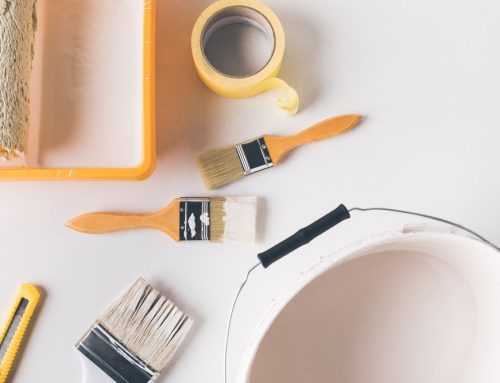How Often Should You Repaint Your Home Interior and Exterior?
When you walk into a freshly painted room, it feels like the entire space is reborn — lighter, cleaner, and full of new energy. That’s the power of a good paint job by a full-service painting company. But as with anything beautiful, time takes its toll. Walls fade, peel, or look tired. Repainting isn’t just about looks — it protects surfaces, preserves property value, and keeps your house vibrant. But how often should you paint your home? Timing depends on several factors, including surface materials, climate, paint quality, and room usage. Let’s dive into professional advice for brilliant, lasting results.
How Long Does Interior Paint Last?
You’ve just finished a stunning new paint job inside your home. You sit back, admire it, and hope it lasts forever. But over time, even the best paint jobs will need a refresh. So, how long can you expect that beautiful finish to hold up?
Key Factors That Affect Interior Paint Longevity
First, the surface material plays a starring role. Smooth drywall tends to hold wall paint longer because it offers a stable, even surface. Compare that to wood, which naturally expands and contracts with changes in humidity, or masonry, which is porous and can cause paint to wear more quickly if not properly sealed.
Next is the quality and type of paint you choose. Latex paints, also known as water-based paints, are incredibly durable, flexible, and resistant to fading, making them the go-to choice for interior applications. Oil-based paints, while providing a gorgeous, rich finish, can yellow over time and are generally less forgiving in high-humidity areas.
Room usage is another massive factor. Spaces that endure high-traffic areas, heat, or moisture, such as kitchens, bathrooms, and hallways, will naturally experience faster wear and tear. Bedrooms and living rooms, on the other hand, are typically gentler on interior walls.
Typical Lifespan of Interior Paint by Room
Here’s a better sense of what you can expect:
Bedrooms and Living Rooms (5–7 years): These rooms experience minimal physical wear and, if well-ventilated and maintained, can last five to seven years without needing a touch-up. Adult bedrooms in particular tend to have less foot traffic and less constant washing, extending the life of the paint.
Kitchens and Bathrooms (3–4 years): Constant steam, splashes, and grease splatters accelerate paint deterioration. Even high-quality paints here often need refreshing sooner. Kitchen walls and bathroom walls take more daily abuse than other rooms.
Hallways and Corridors (2–3 years): Every day brings new scuffs, bumps, and scratches. Narrow spaces, especially, take a beating and require more frequent repainting in these most trafficked zones.
Ceilings (7–10 years): Since ceilings avoid direct contact and heavy use, they tend to retain their ceiling paint the longest — unless you’re dealing with moisture issues, such as leaks.
Professional tip: With years of experience in the industry, our team at Gustafon Painting recommend using a semi-gloss or satin finish in busy rooms, as it can extend paint life by making walls easier to clean without damaging the finish, especially in laundry rooms or living and dining rooms. Read more on how paint protects your home or business from damage.
How Often Should You Repaint Your Home Exterior?
Your home exterior is its first impression — and its first line of defense against the elements. Every gust of wind, drop of rain, and blast of direct sunlight chips away at your exterior paint. That’s why exterior paint isn’t just cosmetic; it’s protective armor.
Factors That Impact Exterior Paint Durability
1.The material of your house exterior matters greatly.
Wood siding, a living material, expands and contracts with changes in moisture and temperature, causing paint to crack and peel more quickly. Stucco, while tough, can develop hairline fractures that stress the paint. Brick and fiber-cement siding are much more stable, helping paint adhere for longer periods.
2.Climate is another major player.
If you live in a region with intense sunlight, paint tends to fade more rapidly. In damp or coastal climates, salt and moisture can creep under paint, causing blistering and peeling. Even in cold climates, the freeze-thaw cycle can cause paint coatings to separate over time.
3.Lastly, the quality of your previous paint job
How well the surface was prepared sets the tone. Skipping prep work like power washing, sanding, or priming? That shortcut might cost you years off your paint’s life.
Average Exterior Repainting Timelines by Surface
Here’s when you should typically consider repainting:
Wood Siding (every 3–7 years): Natural movement and moisture damage shorten its lifespan. Because wood is porous and flexible, using high-quality exterior paint and sealing it correctly can help extend the life of your siding.
Stucco (every 5–6 years): Stucco holds up decently, but cracks and shifts eventually compromise the surface. A fresh coat of elastomeric wall paint, specifically designed for stucco, can significantly enhance durability and moisture resistance.
Painted Brick (every 12–15 years): Brick is stable and less vulnerable — when painted properly, it stays strong for well over a decade. Opting for high-quality paints specially formulated for masonry ensures that the brickwork maintains its protection and color vibrancy.
Fiber Cement Siding (every 10–15 years): Extremely durable and resistant to weathering, fiber cement holds paint exceptionally well. To maximize longevity, professional painters recommend thorough prep work and premium paint that bonds tightly to the surface.
Pro tip: Even if your exterior looks fine, regular inspections are key. Catching small cracks early can save you from full touch-ups or a costly full repaint, extending the timeline for how often you need to paint your home. Our professionals at Gustafson Painting perform precise inspections nd offer recommendations for repainting or touchups depending on the findings.
Signs It’s Time to Repaint (Interior and Exterior)
How do you know it’s time to break out the rollers? Pay close attention to these signs:
- Cracking, Bubbling, or Peeling Paint: These are warning signs that the paint’s bond to the surface has failed. Left alone, moisture can seep in and cause deeper damage.
- Fading or Discoloration: Not only does faded paint appear tired, but it also often indicates that the protective components have deteriorated.
- Mold, Mildew, or Water Stains: If your walls show spotting, greenish tints, or watermarks, it’s time to address the problem and repaint.
- Worn or Damaged Trim: Window trim, doors, and molding are often the most severely affected. Damaged trim can lead to bigger structural issues if not promptly addressed.
How Climate Influences Repainting Frequency
Different climates age your home differently. Understanding your environment helps you repaint at the right time — before minor problems become major repairs.
In hot, sunny climates, UV rays cause pigments to break down. Expect faster fading and surface cracks, particularly on house exterior surfaces.
In humid Areas, moisture-laden air encourages mold growth and causes blistering.
In cold, snowy regions, freeze-thaw cycles cause exterior paint to expand and contract, resulting in chipping and cracking.
No matter where you live, climate-smart choices — like UV-resistant or mildew-resistant paints — can dramatically extend your fresh coat’s lifespan.
How Paint Quality Affects Repainting Cycles
Let’s be honest: you get what you pay for when it comes to paint.
Premium paints use better pigments, binders, and resins. They provide richer colors, thicker coverage, and much better resistance to wear, fading, and mildew. Economy paints, while tempting for your wallet today, often result in quicker deterioration, meaning you’ll repaint sooner and spend more over time.
If you’re aiming for the long haul, invest in a top-quality paint tailored to your needs: one designed for high humidity if you’re near the coast, or one with added UV resistance if you live in a sunny climate.
Professional Tips to Extend the Life of Your Paint Job
We all want our fresh coat of paint to stand the test of time. Having painted many commercial and residential properties, we know how to prolong the life of your paint job:
1.Proper Surface Preparation: Never skip prep work. This involves thoroughly cleaning the surface, sanding to create a bonding texture, filling any cracks, and applying a high-quality primer before painting.
2.Maintenance Best Practices: Don’t set it and forget it. Inspect walls and exteriors annually for early signs of wear and tear. Spot-treat chips or cracks quickly to prevent spreading damage.
3.Washing Exterior Walls Annually: A gentle wash removes dirt, pollutants, mold spores, and pollen that can prematurely degrade paint. Constant washing is essential for high-traffic areas.
Think of your paint as a shield — it needs a little attention to stay strong.
Refresh Your Home with Gustafson Painting
Ready to give your home the vibrant, lasting beauty it deserves? Trust the painting pros at Gustafson Painting to deliver flawless, professional results inside and out. Whether it’s your home’s interior or exterior, we’ve got you covered. Contact us today for a free estimate and let’s create a fresh look with your great idea for your living room, dining room, bathroom, or any other factors you’re considering.


